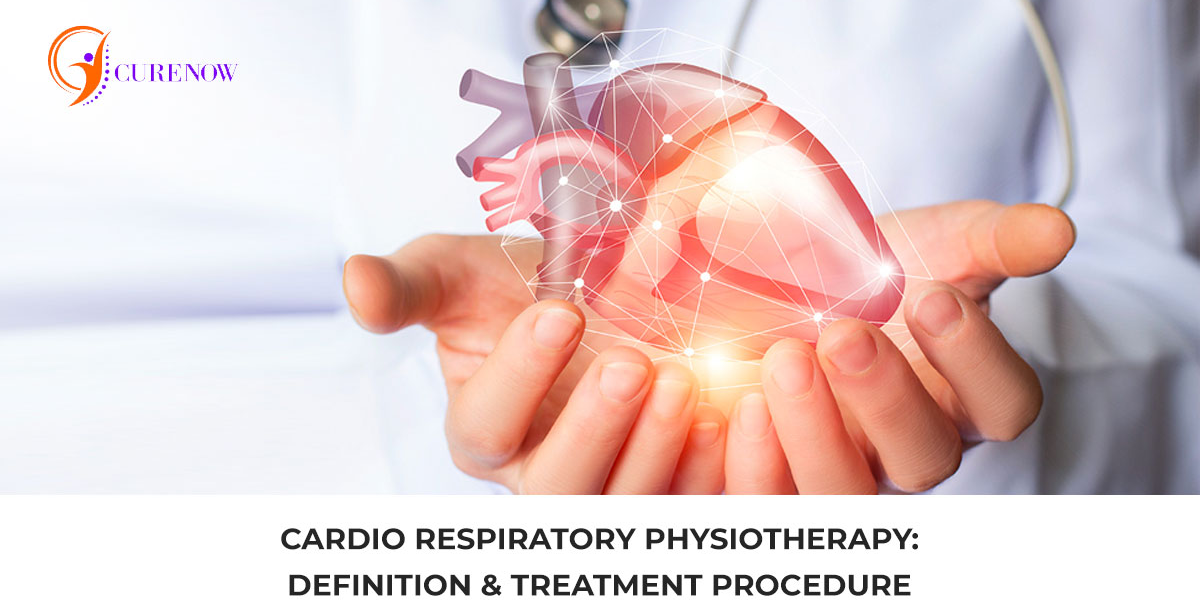What Is Cardio Respiratory Physiotherapy?
For patients impacted by diseases related to the heart and lungs, Cardiorespiratory Physiotherapy is recommended. With Cardiorespiratory Physiotherapy, heart and lung diseases can also be prevented, and a comprehensive rehabilitation process can be started.
With Cardiorespiratory Physiotherapy, lung secretions can be cleared, lung collapse can be prevented and patients can breathe easily, without much effort.
In children with acute respiratory illness, Cardiorespiratory Physiotherapy is quite effective, especially in those cases, where external ventilation support is required for patients.
For heart patients, Cardiorespiratory physiotherapy will help in increasing blood flow and enhancing strength and stamina for lowering heart-related diseases.
Common Conditions For
Common cardiorespiratory conditions, when cardiorespiratory physiotherapy is recommended:
- Congestive Cardiac Failure (CCF)
- Peripheral Vascular Disease
- Asthma
- Emphysema
- Hypertension
- Chronic Obstructive Pulmonary Disease (COPD)
- Angina
- Heart or lung injury or surgery
- Heart Attack (MI)
- Bronchitis
- Respiratory Infections, i.e. Pneumonia
- Bronchiectasis
Treatment Procedure Under Cardiorespiratory Physiotherapy
- Depending on the condition and severity of the patient, different treatment procedures are advised for patients with heart and lung diseases, both in-hospital and/or at home.
- Some of the common treatment procedures under Cardiorespiratory physiotherapy include (but are not limited to..)
- Deep Breathing Exercises: With deep breathing exercises, the patient’s lungs can absorb more oxygen which directly results in improving respiratory functionality, along with chest expansion.
- Breathing Facilitation Exercises: With breathing facilitation exercises, the lungs' capacity is increased, leading to improved and seamless breathing.
- Percussions and Vibrations: These are manual physiotherapy techniques, which are applied to the chest wall. With Percussion, the sputum in the lungs is loosened, and it can stimulate coughing, which eventually helps the patient to loosen secretions and makes breathing easy. With vibrations, expiratory flow rates are increased and cause changes to the intrathoracic pressures. Both of these manual exercises are done by a therapist on the patient.
- Coughing and Breathing Strategies: These are normal physiotherapy exercises, which the patient can do on their own, and helps the patient to manage shortness of breath.
- Breathing and Circulation Exercises: These are advanced cardiorespiratory exercises that help the patients to prevent further respiratory and vascular complications. Chest infection and deep venous thrombosis (DVTs) can be prevented with breathing and circulation exercises.
- Mobility Assistance: Mobility assistance is very helpful and relevant for those patients who are recovering from injuries or surgeries related to the heart. With mobility assistance from expert physiotherapists, the patients can sit up from bed, move, stand and walk on their own, and gradually return to normal life.
- Customized tailored exercises: In some cases, physiotherapists having expertise and experience in cardiorespiratory exercises can formulate special, customized exercises that help the patient to control their breathing patterns, and develop muscle strength and stamina.
If you are searching for expert guidance for cardiorespiratory physiotherapy, then our UK-trained and certified Physiotherapists at CureNow Wellness can help you, right away. Our seasoned physiotherapists can diagnose the present condition, and suggest the best way forward.
Book an appointment with our Physiotherapists today, and start the healing process.
- Neuromuscular Physiotherapy: This Is How Brain, Nerves & Spinal Cord Disorders Can Be Treated
- Spinal Cord Injury: 3 Spine Physiotherapy Treatments Recommended By Experts
- What Is Cardiovascular Physiotherapy? What Are The Benefits Of Physiotherapy In Cardiac Rehab?
- What Is Musculoskeletal Physiotherapy?
© Copyright CURENOW . All Rights Reserved. Presented By
RISIAR Step In Business Hub Pvt Ltd
